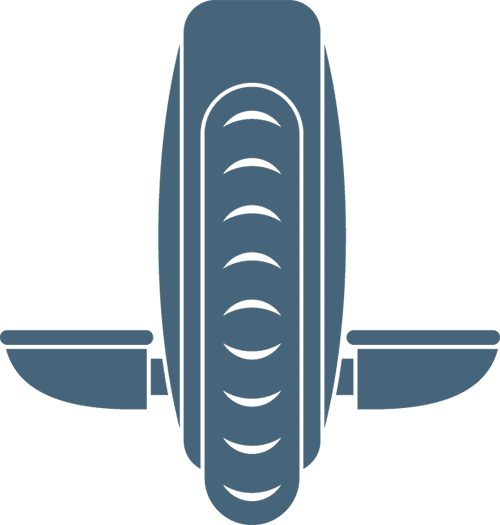If you haven’t heard, after almost 20 years Segway is ending its line of the Segway Personal Transporter, the Segway PT. This was first reported by the Fast Company.
I hope e-rideable companies like the makers of the Onewheel and EUCs can learn from Segway’s mistakes so they don’t have to reinvent the wheel (pun).
Why did Segway fail and what can other micromobility devices like E-scooters, Onewheel, EUC, and E-skate learn from Segway’s failures?
Not too long ago I did a video on the death of the Boosted Board and I asked, who is next to fail. Well, apparently, the answer is Segway.
Why did the Segway fail? Why did they only sell 140,000 units in almost 20 years of existence?
Was it public perception?
Early on, the Segway had huge amounts of hype as the future of urban transportation. It made the rounds on the news and on talk shows. It had a huge amount of buzz, but so did Boosted, now look at them. The buzz for Segway never translated to sales and the Segway was left to wither away as a novelty device relegated to Segway tours and mall cops.
Watch this video if you don’t like to read:
People never fell in love with the Segway because it seemed more like a novelty item than a serious mode of transportation.
It certainly didn’t help the company’s perception when Jim Heselden, who had purchased the Segway Company, died while riding a Segway that fell off a 30-40 foot cliff.
It’s one thing when a customer dies using your product. It’s another thing when the person that dies while operating your product is the billionaire owner of the company. Other companies have had people die while using their products, but not the owner of the company. I’m not sure how you recover from that.
Was it the design that killed the Segway PT?
Was the design too advanced and too futuristic? Electric bikes, electric scooters, electric skateboards, and even the Onewheel and electric unicycles have the benefit of being somewhat familiar to people which makes public acceptance easier.

Maybe the unfamiliar design and riding style at the time was too much for the public. The Segway remained and still remains a novel form of transportation. With such a different design and concept, maybe the world just wasn’t ready.
Was it the price that killed the Segway PT?
The Segway was first released in December of 2001 for $5000, a lot of money at the time and a lot of money still by today’s standards for a device with a top speed of about 10 miles per hour.
Modern day Segways are much more sophisticated, but if you are looking for an electric mobility device, you can get something cooler like the Onewheel or a lot faster like this Turbowheel Swift Scooter for less money.
If you think about the modern day hoverboards that kids love to ride, they are basically hands free descendants of the Segway. How are hoverboards so popular despite their sordid history of battery fires and rider injuries?
They are cheap and have a great marketable name in “hoverboard” even though they neither hover, nor are they boards… to this day I still say the name “hoverboard” is a huge misnomer for a product not worthy to carry that title.
Regardless, Hoverboards definitely benefit from a core consumer base of grade school kids that all want one for Christmas and birthdays. Hoverboards can easily be marketed and sold to kids and that’s who they targeted.
Hoverboards didn’t want to be the future of transportation, they just wanted to be the future of fun for kids and the Segway PT could never do that.
While Segway never became the ubiquitous people mover of the future that creator Dean Kamen envisioned, personal electric transportation is taking shape in its own way with e-scooters, e-bikes, EUC’s, Onewheels, and E-skate all emerging as options for fun and affordable transportation, recreation, and even sport.

Even though the Segway device is dead, the patents on self balancing tech still lives and works through other devices made by Ninebot Segway as well as other companies.
I had the chance to sit in the company’s S-Pod at CES earlier this year and Ninebot Segway is looking to continue their growth in the mobility sector even without its namesake. Just peruse the Segway website and it is clear that Ninebot-Segway has pinned its future on scooters.
I see ending the Segway PT as a move to streamline the company’s offerings. Ninebot-Segway did the same thing when they ended their line of electric unicycles, including the very popular Z10 electric unicycle.
The tale of Segway is a classic one that reminds me of the saying from Daymond John, a successful businessman and investor who I know from watching the television show Shark Tank:
“Pioneers get slaughtered and settlers prosper.”
Daymond John
Pioneers represent those who take the risk and accept the danger to break new ground or go to new places. These people usually either metaphorically or physically get slaughtered.
It’s the settlers that follow their already established path that actually prosper because many of the mysterious dangers and treacherous mistakes have already been identified and the road before them is clear.
Segway, you were a true pioneer. You’ve identified the dangerous pitfalls along the road to micromobility success but your ride is over. You’ve metaphorically and literally been slaughtered.
When the Segway PT launched, the head of Segway said it “will be to the car what the car was to the horse and buggy.”
That clearly did not happen. But Segway, others will follow the pioneer trail that you blazed. Some will fail but there will be settlers that will succeed in part because of you.
When others pass the Segway GT tombstone along that pioneer trail that was blazed, they will remember that it was the Segway PT that spawned personal electric transportation as something new, unique, and hopefully oneday, main stream.
Who will step up and push micromobility into the future.
In a growing world of micromobility, who do you think will emerge king of personal electric mobility? E-Scooter? E-Skate? Onewheel? EUC? Or is there something I haven’t mentioned yet?







